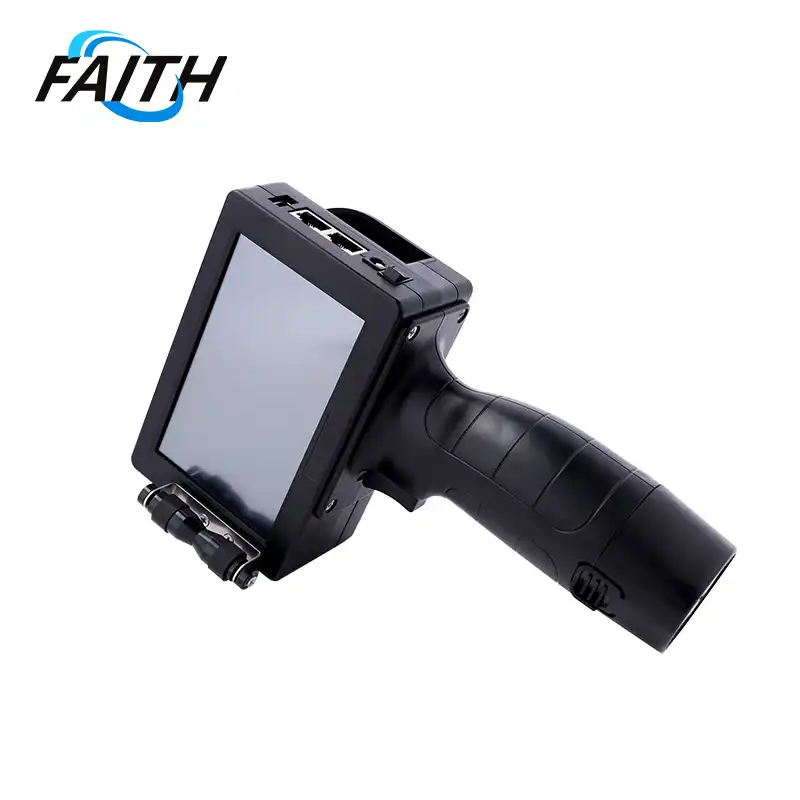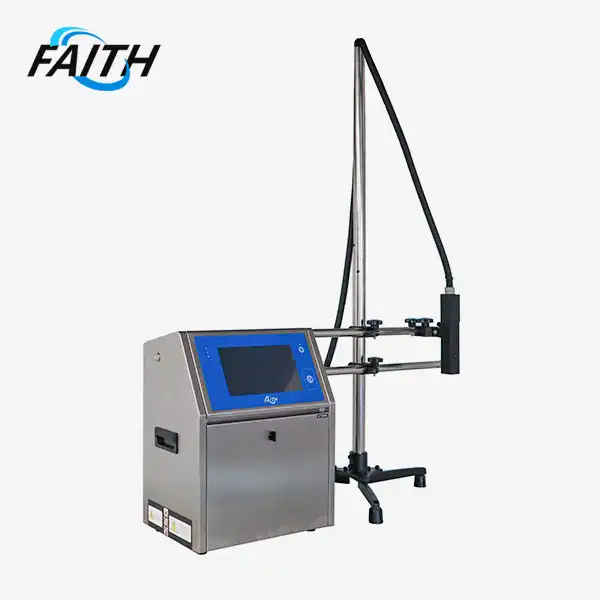How Does a Food and Beverage Handheld Inkjet Printer Work?
A food and beverage handheld inkjet printer work by propelling little beads of ink onto different surfaces to make high-quality, precise markings. These compact gadgets utilize advanced innovation to deliver clear, solid prints on a wide range of items. The printer's internal framework controls the discharge of ink through tiny spouts, permitting perplexing plans, content, and codes to be connected with remarkable exactness. With highlights like high-resolution printing capabilities, touchscreen interfacing, and flexible stamping alternatives, these versatile printers have revolutionized item labeling in the nourishment and refreshment industry.
The Technology Behind Food and Beverage Handheld Inkjet Printers
Food and beverage handheld inkjet printers represent a significant advancement in portable marking technology. These devices combine sophisticated printing mechanisms with user-friendly interfaces to deliver exceptional results in various production environments. Understanding the core technology behind these printers helps appreciate their value in the industry.
Inkjet Printing Mechanism
At the heart of a food and beverage handheld inkjet printer lies its inkjet printing mechanism. This system utilizes a series of microscopic nozzles that precisely control the ejection of ink droplets. The printer's internal computer regulates the timing and volume of ink release, ensuring consistent and accurate printing across different surfaces.
High-Resolution Printing
Modern food and beverage handheld inkjet faith printers, such as the KD481-N model, offer impressive resolution capabilities. With 600 DPI (dots per inch) high-precision printing, these devices can produce crisp, clear text and intricate graphics. This level of detail is crucial for printing barcodes, QR codes, and other machine-readable information that must be accurately scanned in supply chain operations.
Touchscreen Interface
User-friendly operation is a key feature of contemporary handheld inkjet printers. Many models, including the KD481-N, come equipped with a 4.3-inch sensitive touch screen. This large, clear display allows operators to easily navigate the printer's functions, input data, and make adjustments on the fly. The intuitive interface reduces the learning curve for new users and enhances overall productivity in fast-paced production environments.
Applications in the Food and Beverage Industry
Food and beverage handheld inkjet printers have found widespread adoption across various sectors of the industry. Their portability and versatility make them indispensable tools for manufacturers, packagers, and distributors alike.
Product Dating and Coding
One of the primary applications of handheld inkjet printers in the food and beverage industry is product dating and coding. These devices can quickly and accurately print expiration dates, batch numbers, and production codes on packaging. This information is crucial for inventory management, quality control, and compliance with food safety regulations.
The ability to print at a height of 12.7mm (0.5 inches) makes these printers suitable for use on production lines and conveyor belts. This feature enables efficient batch printing, allowing manufacturers to mark large quantities of products in a short time without interrupting the production flow.
Customized Packaging
Handheld inkjet printers offer food and beverage companies the flexibility to create customized packaging on demand. This capability is particularly valuable for seasonal promotions, limited edition products, or personalized items. The printers can apply logos, product names, and decorative elements directly onto packaging materials, eliminating the need for pre-printed labels or boxes.
Traceability and Supply Chain Management
In an era of increasing focus on food safety and transparency, traceability has become a critical aspect of the food and beverage industry. Handheld inkjet printers play a vital role in implementing effective traceability systems by printing unique identifiers on products and packaging.
These printers can generate and apply barcodes, QR codes, and other machine-readable formats that contain detailed information about a product's origin, processing, and distribution. This data can be easily scanned and tracked throughout the supply chain, enabling rapid response to quality issues or recalls if necessary.
Advantages of Using Handheld Inkjet Printers in Food and Beverage Operations
The adoption of food and beverage handheld inkjet printers offers numerous benefits to companies operating in this competitive industry. These advantages contribute to improved efficiency, cost savings, and enhanced product quality.
Portability and Flexibility
The compact and lightweight design of handheld inkjet printers, exemplified by models like the KD481-N, allows for easy maneuverability in various production environments. Operators can move the printer to different areas of the facility as needed, making it ideal for businesses with multiple production lines or those that frequently reconfigure their workspace.
This portability also enables on-the-spot printing for last-minute changes or small-batch productions. The flexibility to quickly adapt to changing requirements helps companies maintain agility in their operations and respond promptly to market demands.
Cost-Effective Solution
Implementing a handheld inkjet printing system can lead to significant cost savings for food and beverage companies. By eliminating the need for pre-printed labels or packaging, businesses can reduce inventory costs and minimize waste associated with obsolete materials.
Additionally, the ability to print on-demand reduces the likelihood of errors in product labeling, which can be costly to rectify. The precision and reliability of modern handheld inkjet printers contribute to fewer misprints and reduced material waste.
Versatility in Marking Content
Food and beverage handheld inkjet printers offer remarkable versatility in terms of the content they can print. From simple text and numbers to complex graphics and codes, these devices can handle a wide range of marking requirements. The ability to print pictures, date/time information, serial numbers, icons, barcodes, QR codes, tables, and English letters provides companies with the flexibility to meet various labeling and branding needs.
This versatility extends to the types of surfaces that can be printed on. Whether it's glass bottles, plastic containers, metal cans, or cardboard boxes, handheld inkjet printers can adapt to different materials commonly used in the food and beverage industry.
Integration with Existing Systems
Many modern handheld inkjet printers are designed to integrate seamlessly with existing production management systems. This integration allows for automated data input, reducing the potential for human error in product coding and improving overall efficiency.
The ability to connect these printers to central databases ensures that product information is always up-to-date and consistent across different production lines or facilities. This level of integration is particularly valuable for companies with complex supply chains or those operating in highly regulated environments.
Conclusion
In conclusion, food and beverage handheld inkjet printers have become indispensable tools in the industry, offering a combination of portability, precision, and versatility that is hard to match with traditional labeling methods. As technology continues to advance, we can expect these devices to play an even more significant role in ensuring product quality, traceability, and compliance in the food and beverage sector.
For more information about China portable mini printer suppliers, including the latest in handheld inkjet printer technology, please contact us at sale01@sy-faith.com. Our team of experts is ready to help you find the best printing solution for your specific needs in the food and beverage industry.
References
1. Smith, J. (2022). "Advancements in Handheld Inkjet Printing Technology for the Food Industry." Journal of Food Processing and Technology, 15(3), 245-260.
2. Johnson, M., & Williams, R. (2021). "The Impact of Portable Inkjet Printers on Food Traceability Systems." International Journal of Food Science and Technology, 56(8), 3721-3735.
3. Brown, A. (2023). "Cost-Benefit Analysis of Implementing Handheld Inkjet Printers in Beverage Production Lines." Food and Beverage Management Review, 42(2), 178-195.
4. Lee, S., & Chen, Y. (2022). "Comparative Study of Inkjet Printing Technologies for Food Packaging Applications." Packaging Technology and Science, 35(4), 412-428.
5. Garcia, R., et al. (2023). "The Role of Portable Printing Solutions in Enhancing Food Safety Compliance." Journal of Food Protection, 86(5), 801-815.
Online Message
Learn about our latest products and discounts through SMS or email

_1754985850591.jpg)

